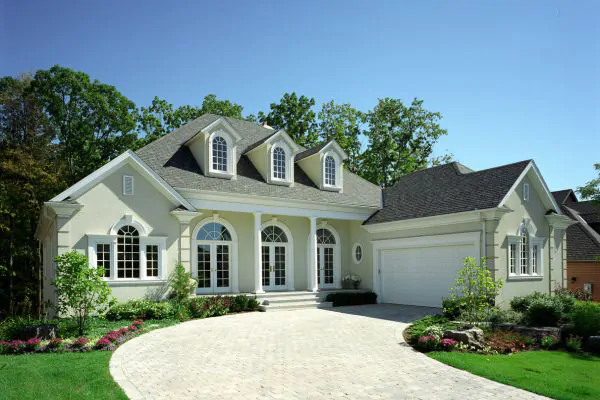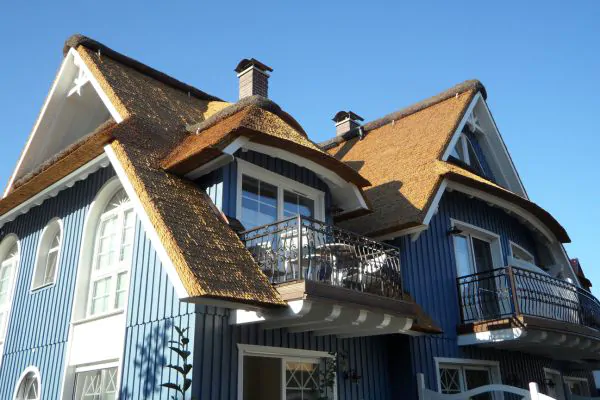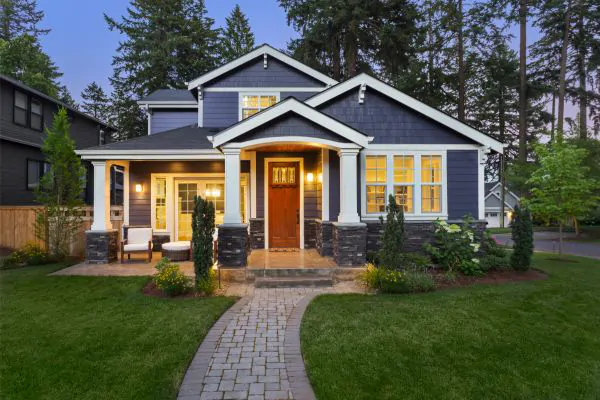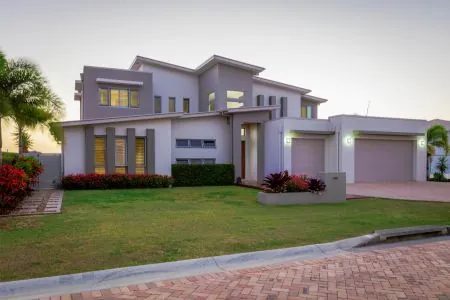
Choosing exterior paint colors for your home can be daunting. After all, your chosen color will impact your home’s curb appeal and value. It’s easy to become overwhelmed by the many color options. Because of this, it’s crucial to carefully consider all the variables that could influence your decision on an exterior paint shade.
This article will explore seven crucial factors when selecting your home’s exterior paint color. From climate and surroundings to personal style and preferences, we’ll guide you through the decision-making process of picking house colors, ensuring you choose a great color that complements your home’s architecture and surrounding environment.
Let’s dive in!
Climate and Surroundings
It’s crucial to take the local temperature and environment into account before choosing exterior paint colors for your property. This is because your chosen colors should complement the natural surroundings and weather conditions to create a cohesive and harmonious look. For example, a bright, bold color may look out of place on a home located in a natural, wooded area, whereas a muted house color scheme that blends in with the surroundings would be more appropriate.

Select hues that can survive the elements if your house is in a location with bright daylight or freezing weather. Lighter colors are often a better choice for areas with a lot of sun exposure since they reflect heat and sunlight, helping to keep your home cooler. Conversely, darker colors absorb heat and can cause your home to become hotter. Warmer hues like yellow, red, or orange can lend a cozy feel to the aesthetic of your property in cooler locations.
Architecture and Style

The architecture and style of your home should also play a significant role in your exterior paint color decision. You should pick the type of paint that emphasize and compliment the distinctive qualities of your property because unique modeling designs adapt themselves to particular color palettes. A luxury building might look more striking With a dramatic, monotone color palette, whereas a Victorian-style property may look best with a variety of earth tones.
Another thing to consider is the materials used in your home’s construction. A brick house, for instance, might look great with earthy, muted colors, while a stucco home would look good with brighter, bolder hues. You should consider the hue of your rooftop because the topmost paint might assist you in deciding on the complementing shades for the remainder of the property.
Lastly, consider the size of your home when choosing exterior paint colors. Lighter colors can make a smaller home appear more expansive, while darker hues make a more prominent home feel cozier. Contemplate choosing a shade for your property that stands out among the neighborhood.
Neighborhood and HOA Requirements
It’s essential to keep in mind any neighborhood and homeowner association (HOA) requirements or restrictions. Many neighborhoods and HOAs in Santa Fe have specific rules and regulations regarding exterior colors, so you’ll want to review these before making any final decisions.
Some HOAs may have a list of approved colors or color palettes, while others may require you to submit a color sample for approval. Before painting your house a new shade, it may be required that you acquire their consent.
Even if your neighborhood or HOA has no specific color guidelines, you should still consider the surrounding homes and how your color choice will fit into the area’s overall aesthetic. You want to choose something that doesn’t clash with the surrounding homes or look out of place in the neighborhood.
Natural and Artificial Lighting
Your home’s natural and artificial lighting should also play a role in your exterior paint color decision. The amount and type of light your home receives can significantly impact how your chosen colors look, both during the day and at night.

Artificial lighting can also significantly impact how your home’s exterior paint colors appear. You’ll want to consider the lighting fixtures you have outside and the lightbulbs used in those fixtures. Lightbulbs release various colors of light, with a few providing a softer, bluish glow while others give off a hotter, yellower light.
Understanding Color Theory for Choosing Exterior Paint Colors
The color wheel is one of the most crucial ideas in color theory. It is a tool that explains the connections between various hues. It consists of twelve colors arranged in a circle, each with a unique relationship to the colors beside it. For instance, harmonizing colors that are on opposing sides of the color wheel from one, like blue and orange or red and green—can produce a striking appearance.
The color theory is also all about color temperature. Depending on their undertones, colors can be classified as either warm or cool. Lighter shades, like grays, blues, and greens, can provide a relaxing and soothing aesthetic, while vibrant colors, like yellows and reds, can generate a hospitable and appealing aspect. For this reason, it’s essential to get sample colors from your contractor to see how each shade looks on your house.
Related Post:How Often Should You Paint the Exterior of Your Home?
Personal Style and Preference
Your style and preferences are essential when choosing exterior paint colors for your home. The shades you chose should represent your taste and satisfy you since you’ll be seeing your home daily.
When choosing exterior house color, consider the colors you’re drawn to. Do you prefer warm, bold colors or cool, calming colors? Do you like bright and vibrant hues or prefer softer, more muted tones? Consider your style and the colors you wear or decorate with to understand what might work well for your home’s exterior.
Your preference and style for your exterior paint should be adequately communicated with your hired house painters. Professional exterior painting contractors Santa Fe, NM, will be able to help you find the perfect colors for your home.
Conclusion
A terrific way to define oneself and make your property seem more like home is to decorate it according to your taste and preference. When picking exterior paint colors, there are several factors you should consider, including the size of your home, any neighborhood and HOA requirements, natural and artificial lighting, color theory principles, and your style and preferences. Considering all these elements can help ensure your home looks fantastic for years.
So, the next time you wonder how to pick paint colors for your house, remember these seven factors and ensure you get the look you love!





